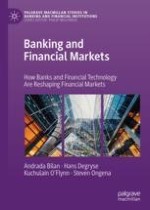2019 | OriginalPaper | Buchkapitel
4. Credit Risk
verfasst von : Andrada Bilan, Hans Degryse, Kuchulain O’Flynn, Steven Ongena
Erschienen in: Banking and Financial Markets
Aktivieren Sie unsere intelligente Suche, um passende Fachinhalte oder Patente zu finden.
Wählen Sie Textabschnitte aus um mit Künstlicher Intelligenz passenden Patente zu finden. powered by
Markieren Sie Textabschnitte, um KI-gestützt weitere passende Inhalte zu finden. powered by
